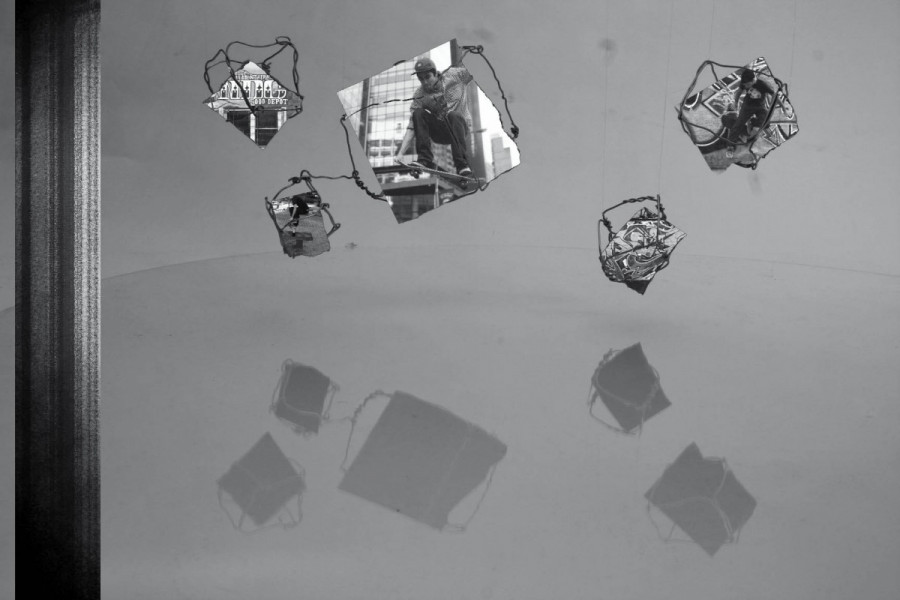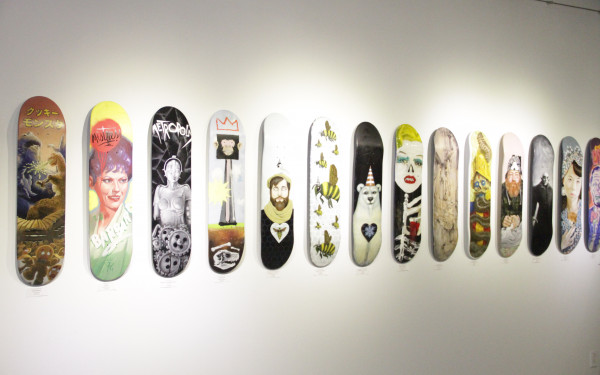Skateboarding in a Hostile City
Fifteen minutes into a midnight skate session with friends at Peace Park last summer, a homeless man hassled me into doing a kickflip for him. I relented with a pop and a flick, and let my board spin around once.
The grip tape slapped the soles of my feet then the four wheels clapped the pavement, echoing into the night.
The man finger-whistled and sat by his friends near one of the long, marble ledges and started smoking something out of a glass pipe while watching us try our luck with the skateboard.
Throughout the session the man shouted out, “Awesome, dudes,” and “Way to go, bros,” when we landed things, soon followed by laughter and “You suck,” when we bailed. There was nothing unique about the event, as interacting with people that don’t sleep at night has become a part of skate culture—because street skateboarding is illegal.
Skaters looking to get creative with new terrains are subjected to doing it when fewer police and onlookers are around.
Before 2003, a skater could be fined for unruly noisemaking, but the Quebec Court soon ruled that noise from a skateboard wasn’t a “public nuisance.”
Skaters soon discovered that riding a skateboard on something that isn’t a skate park or bike path could earn them a $30 ticket.
It has now been reported that cops can hand out a $680 ticket for skating in great spots like Square Victoria and Peace Park.
Even though Peace Park is usually occupied only with skaters, and perhaps the occasional homeless person—becoming one of Montreal’s most famous skate spots—the City of Montreal has outlawed the space for those who use it most.
City officials argued that worn down and discoloured marble ledges and damaged trees were the reasons why skaters were told to stay away.
With skate spots in short supply, the Quartier des Spectacles and the Société des arts technologiques teamed up to create a space that pedestrians and skaters could share. Despite hard work, the city rejected the plans in 2004. Since then, the SAT has taken an active stance in making Peace Park a legal space for skateboarding, according to SAT Communications Coordinator Martin Lapointe.
So where does the city stand in regards to upholding a vibrant skate culture?
Montreal is home to one of the biggest underground skate scenes in North America, and it is also home to some of the world’s most talented professionals.
The city was given a place of honour when it was selected as one of the settings for Emerica’s Wild in the Streets campaign, where a mob of skaters get together to raise awareness and money for the Quebec Skate Plaza—a skateboarder designed space and park that’s open for skaters and pedestrians to hang out.
“More than 500 people were at the campaign. It was crazy busy,” said Ibrahim Wa, a skateboarder and John Molson School of Business student.
Because Montreal is home to a vibrant skate culture, it’s hard to pinpoint where the city stands in regards to supporting its underground culture. It is legal to ride in a handful of parks, but it’s worth mentioning that “Montreal’s skate aren’t that great,” according to Marc-Antoine Marcoux, who rides flow for Vans shoe company and a Quebec City skateshop. He added that the money raised for Skate Plaza “was a huge waste of money,” because it wasn’t designed by skateboarders.
“The ones outdoors are all plastic and all the coping is messed up,” said Wa. “The parks look the same and the rails and boxes are usually low. There’s no challenge. You get sick of it because they’re all the same.”
There are also no skate parks downtown.
“They’re all 20 minutes away,” said Wa. “There’s nothing to skate legally on. In a way, we’re forced to pay because the parks that cost $20 to get into are all perfect and everything else sucks or is illegal.”
No matter how good the park is, skateboarding will never be contained in one space. More than half of the art of skateboarding is being creative with foreign city space and transforming it into something to skate on.
While some of the rush of skateboarding comes from landing tricks, to be honest, most of it comes from sticking it to the man and the gamble of getting caught.
This article originally appeared in Volume 31, Issue 22, published February 8, 2011.


_600_832_s.png)

__600_375_90_s_c1.jpg)
_600_375_90_s_c1.jpg)
1_600_375_90_s_c1.jpg)
